This article provides tips and advice for capturing stunning fall foliage images, with emphasis on preparation, scouting locations, and timing. It stresses the importance of planning ahead, scouting locations, and finding the perfect timing to ensure the most vibrant and colorful images possible.
The article also highlights the factors that influence fall foliage timing, such as location, climate, and altitude, and provides tips for timing photography trips accordingly.

Image by StockSnap from Pixabay
Introduction
Fall foliage photography is a popular genre among photographers, particularly during the autumn season when the leaves on the trees change color, creating a stunning and colorful landscape.
The vibrant reds, oranges, and yellows of the autumn provide a unique and picturesque backdrop for photographers looking to capture the beauty of the season.
The changing colors of the leaves also symbolize the passage of time, making fall foliage photography a sentimental and nostalgic subject for many photographers.
Preparation and planning are essential to capturing stunning autumn images. Without proper preparation, you may miss the peak of fall foliage, fail to find the best locations or forget essential gear.
Planning ahead allows you to research and scout locations, time your photography trip to coincide with the peak of the fall colors, and ensure that you have the right gear to capture the beauty of the season.
Additionally, planning ahead can help you avoid crowds and find unique perspectives that will make your photos stand out. In short, preparation and planning can make the difference between average and extraordinary autumn images.
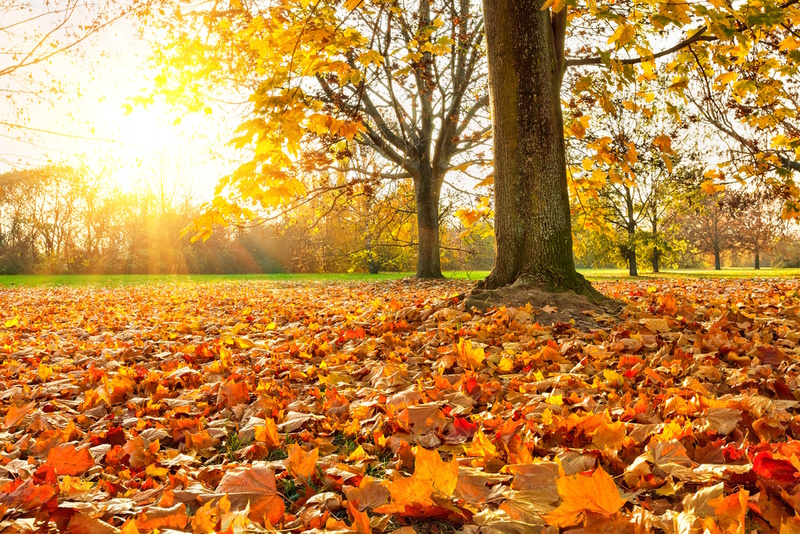
Photo by Depositphotos
Fall Foliage Photography Tips
I- Scout locations ahead of time
Scouting locations ahead of time is crucial to finding the best spots for autumn photography. By researching and visiting potential locations in advance, you can identify the areas with the most vibrant fall colors and find unique compositions that will make your photos stand out.
It’s also essential to consider the type of foliage you want to capture, as different species of trees change color at different times and in different ways.
Moreover, scouting locations ahead of time can help you plan for lighting conditions and find the best angles to capture the beauty of the autumn landscape.
In short, scouting locations ahead of time is a critical step in ensuring that you capture stunning fall foliage images.
1- Tips for finding the perfect location
Here are some tips for finding the perfect location for your fall foliage photography:
- Do your online research: Use online resources such as photography forums, social media groups, and travel websites to find recommendations for the best fall foliage photography locations in your area or the area you plan to visit.
For example. you may check: “21 Best Places to See Fall Foliage in the United States”, and “The Most Beautiful Places in the World to See Fall Foliage”
- Ask for local knowledge: Ask locals, park rangers, and other photographers in the area for recommendations on the best locations to capture fall foliage images. Local knowledge can help you find hidden gems that may not be widely known.
- Visit in person: Visiting the location in person allows you to assess the quality of the foliage and lighting conditions firsthand. This can help you determine whether the location is worth photographing and plan your shoot accordingly.
- Look for unique perspectives: While popular locations may be appealing, don’t be afraid to explore lesser-known areas. Finding unique perspectives and compositions can make your photos stand out and provide a fresh take on a familiar subject.
- Consider the time of day: The time of day can significantly impact the lighting conditions and mood of your photos. Consider visiting your chosen location during the golden hour, blue hour, or other times of the day when the light is optimal for fall foliage photography.
By following these tips, you can find the perfect location for your fall foliage photography and capture stunning images that showcase the beauty of the season.
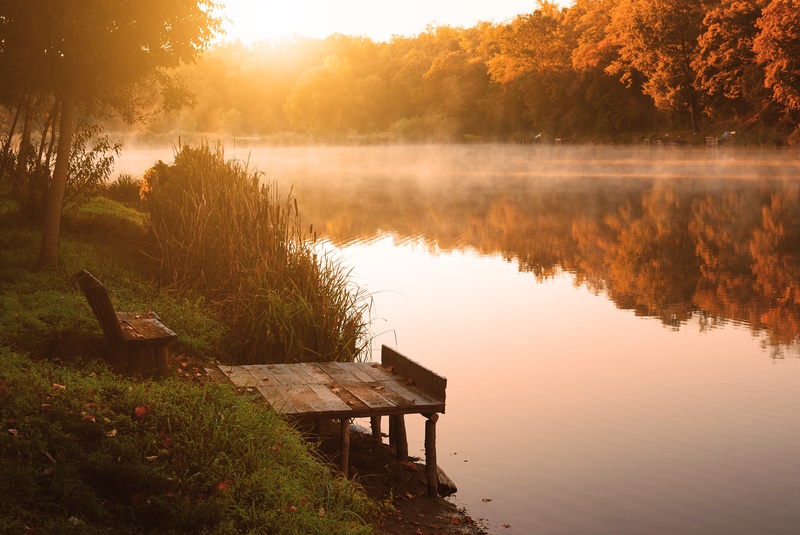
Photo by Depositphotos
II- Timing is everything
Timing is critical when it comes to capturing fall foliage at its peak. The vibrant colors of the autumn leave only last for a brief window of time, typically lasting anywhere from a few days to a few weeks, depending on the location and weather conditions.
Capturing fall foliage at its peak ensures that you will have the most vibrant and colorful images possible.
Timing also impacts the mood and atmosphere of your photos. Early in the fall, the foliage is still relatively green, and the weather may be warm and sunny. Later in the season, the foliage may be past its peak, and the weather may be colder and more overcast.
By timing your photography trip to coincide with the peak of the fall colors, you can capture the quintessential autumn atmosphere and mood in your photos.
Timing can vary depending on the location, climate, and altitude. Therefore, it’s essential to do your research and plan your trip accordingly. Use online resources, such as fall foliage trackers, weather reports, and photography forums, to determine the best time to visit your chosen location. Additionally, be prepared to be flexible with your plans, as weather conditions can impact the timing of fall foliage changes.
In summary, timing is crucial in capturing fall foliage at its peak and ensuring that your photos capture the beauty and atmosphere of the autumn season.

Photo by Depositphotos
-
What are the factors that influence timing?
Several factors can influence the timing of fall foliage changes. Location, climate, and altitude are among the most significant factors that impact when leaves change color and how long they remain on the trees.
- Location plays a significant role in fall foliage timing, as different regions experience different weather patterns and climate conditions. For example, areas with milder temperatures may experience later foliage changes, while regions with colder climates may see earlier changes.
- The climate is another important factor that affects the timing of fall foliage. Warmer temperatures can delay the onset of fall colors, while colder temperatures can bring about an earlier peak. Rainfall and humidity levels can also impact the intensity and duration of fall foliage.
- Altitude can also affect fall foliage timing, as leaves at higher elevations change color and fall earlier than those at lower elevations. In mountainous regions, this can result in a stunning gradient of fall colors as the season progresses.
In summary, location, climate, and altitude are key factors that influence the timing of fall foliage changes. By understanding these factors, you can plan your fall foliage photography trip more effectively and capture the beauty of the season at its peak.
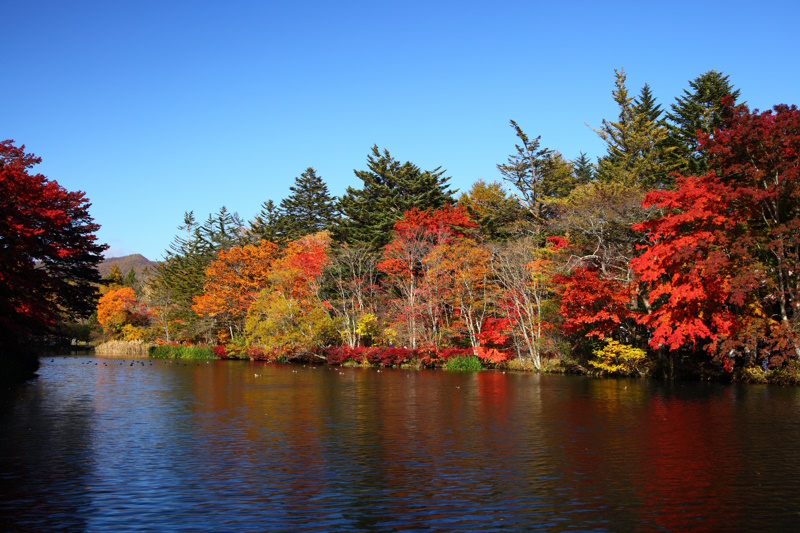
Photo by Depositphotos
2. Tips for timing your photography trip
Here are some tips for timing your photography trip to capture fall foliage at its peak:
- Use online resources: Many websites and apps offer fall foliage trackers that predict when and where the leaves will change color. These resources can help you plan your trip to coincide with the peak of the season.
- Check weather reports: Weather conditions can affect the timing of fall foliage changes. Check weather reports before your trip to ensure that you are traveling during a period of clear weather.
- Work with local experts: Local tourism boards, park rangers, and nature enthusiasts are often very knowledgeable about the local foliage and can provide valuable insights on the timing and location of fall foliage.
- Be flexible with your plans: Foliage changes can be unpredictable, so be prepared to be flexible with your travel plans. Allow yourself enough time to explore different areas and adjust your itinerary as needed.
- Plan for the end of the season: Don’t forget that the fall foliage season eventually comes to an end. Plan your trip to ensure that you are able to capture the most vibrant and colorful foliage possible, even if it means visiting earlier than expected.
By using these tips, you can better plan your fall foliage photography trip and increase your chances of capturing stunning images at the peak of the season.
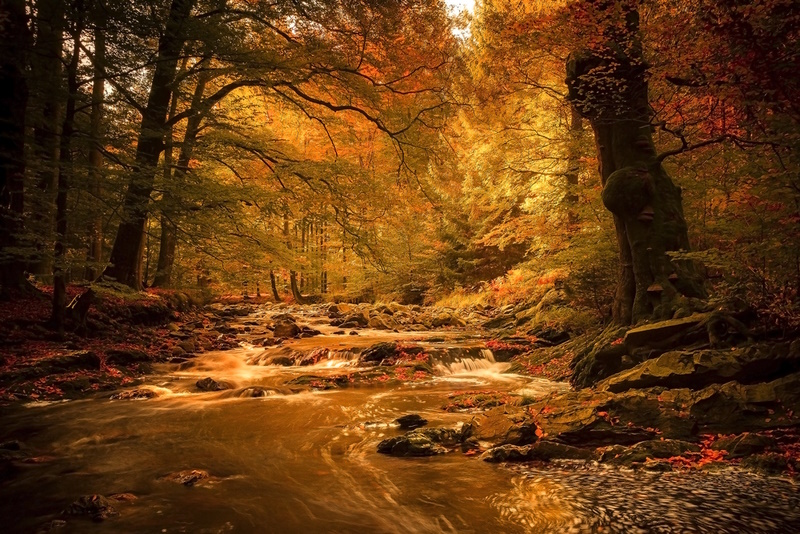
Photo by Depositphotos
III. Choose the right gear
-
Tips for Choosing the Right Gear
Here are some tips for choosing the right camera, lenses, and accessories for fall foliage photography:
- Camera: Look for a camera with manual settings and a high resolution to capture the intricate details of fall foliage. Mirrorless cameras and DSLRs are popular choices for their ability to change lenses and adjust settings.
- Lens: A wide-angle lens can capture the expansive landscapes of fall foliage, while a telephoto lens is ideal for close-up shots of individual leaves and trees. Consider a versatile zoom lens that can cover a range of focal lengths.
- Tripod: A sturdy tripod is essential for keeping your camera steady and minimizing blur, especially in low-light conditions. Look for a tripod that is lightweight and portable, yet strong enough to support your camera and lens.
- Filters: Polarizing filters can reduce glare and enhance colors, while neutral density filters can help balance exposure in bright sunlight. Consider investing in high-quality filters that are compatible with your lens diameter.
- Accessories: A cable release or remote shutter release can help you take sharper photos and minimize camera shake. An intervalometer can be used for time-lapse photography. Consider bringing extra batteries and memory cards to ensure you don’t run out of power or storage space.
When choosing gear for fall foliage photography, consider your budget and specific needs. Remember that gear is only one part of the equation, and composition, lighting, and timing are also critical factors in creating stunning fall foliage images.

Photo by Depositphotos
IV- Composition and framing
-
The importance of composition and framing
Composition and framing are crucial elements in creating compelling fall foliage images that stand out. A well-composed image can capture the beauty of the autumn landscape and evoke a sense of mood and emotion. Here are some key tips for composing and framing your fall foliage images:
- Rule of thirds: Use the rule of thirds to create a balanced composition. Imagine dividing your image into thirds both horizontally and vertically, and place your subject or focal point along these lines or at their intersections.
- Leading lines: Use natural elements such as branches, paths, or rivers to lead the viewer’s eye through the image and toward the focal point.
- Depth: Use foreground elements such as rocks, leaves, or flowers to create depth and add interest to your image.
- Framing: Use natural frames such as trees, arches, or doorways to create a sense of depth and focus the viewer’s attention on the subject.
- Color and contrast: Use color and contrast to create a sense of mood and emotion. Experiment with different color combinations and lighting conditions to create images that convey the feeling of the season.
By paying attention to composition and framing, you can create fall foliage images that are both visually stunning and emotionally evocative. Remember to experiment with different techniques and be creative in your approach to capture the true beauty of the season.
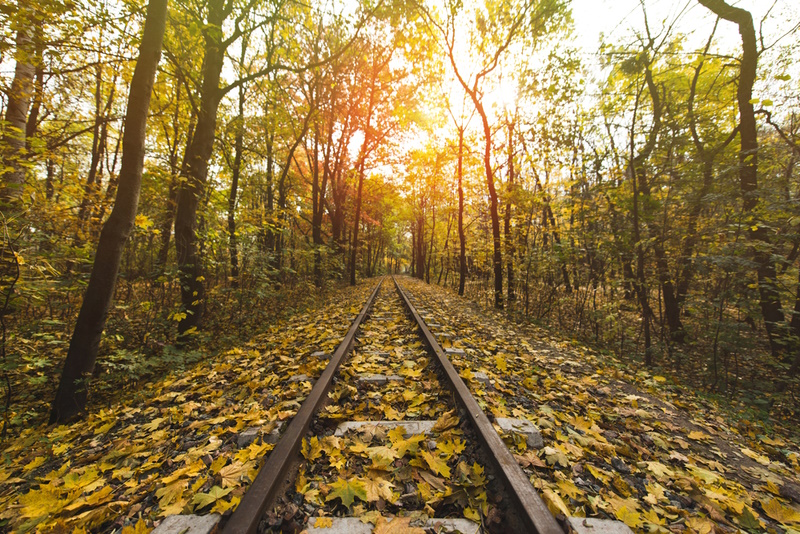
Photo by Depositphotos
2. Experimenting with different angles, perspectives
Experimenting with different angles, perspectives, and focal lengths is essential for creating unique and compelling fall foliage images. By exploring different techniques, you can create images that stand out and capture the beauty of the season in new and exciting ways. Here are some key tips for experimenting with different angles, perspectives, and focal lengths:
- Angles: Try shooting from high or low angles to create a sense of depth and add interest to your images. Experiment with different angles to capture the same scene from multiple perspectives.
- Perspectives: Look for unique perspectives that highlight the beauty of the autumn landscape. Try shooting from behind trees or through leaves to create a sense of depth and layering in your images.
- Focal lengths: Experiment with different focal lengths to create different effects. Wide-angle lenses can capture expansive landscapes, while telephoto lenses can isolate specific elements and create a sense of intimacy.
- Creative techniques: Try using techniques such as panning, zooming, or multiple exposures to create unique and creative fall foliage images.
By experimenting with different angles, perspectives, and focal lengths, you can create images that are truly unique and reflect your personal style and vision. Remember to be creative, explore different techniques, and have fun capturing the beauty of the season.
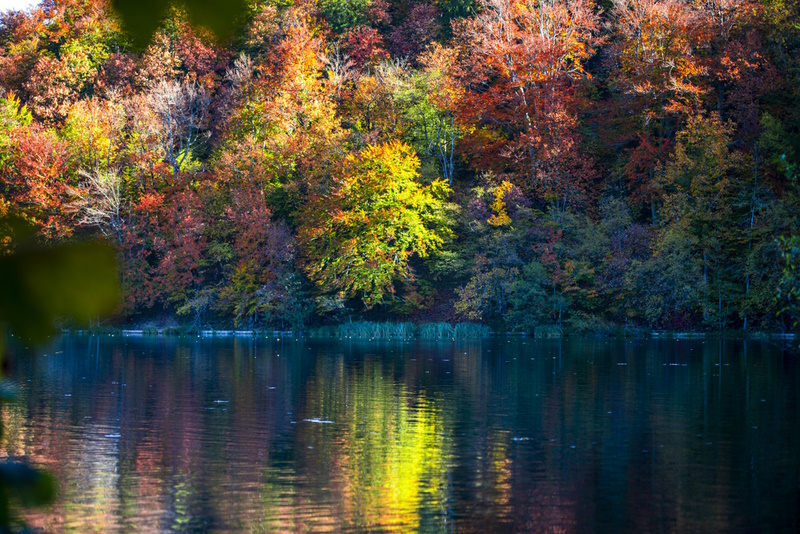
Photo by Depositphotos
V- Lighting and exposure
-
The importance of lighting and exposure
Lighting and exposure are critical factors in capturing stunning fall foliage images. The right lighting and exposure can enhance the colors and textures of the autumn landscape, and create a sense of mood and atmosphere. Here are some key tips for getting the lighting and exposure right when photographing fall foliage:
- Golden hour: The golden hour, which is the time just after sunrise and just before sunset, provides soft, warm light that can enhance the colors of the autumn landscape. Try shooting during these times to create images with a beautiful, warm glow.
- Blue hour is another time of day that can be ideal for capturing stunning fall foliage images. Blue hour is the period of twilight that occurs just before sunrise and just after sunset when the sky takes on a deep blue color. During this time, the light is soft and diffused, which can create a beautiful contrast with the warm colors of autumn leaves.
- Overcast days: Overcast days can provide soft, diffused light that can help to enhance the colors of fall foliage. Use a polarizing filter to reduce glare and bring out the colors and textures of the leaves.
- Avoid harsh light: Harsh light, such as direct sunlight, can create harsh shadows and result in overexposed or underexposed images. Try to shoot during softer lighting conditions to avoid these problems.
- Exposure: Experiment with different exposure settings to find the right balance between highlights and shadows. Use the histogram on your camera to ensure that your exposure is well-balanced.
By paying attention to lighting and exposure, you can capture stunning fall foliage images that truly reflect the beauty of the season. Remember to experiment with different lighting conditions, use filters to enhance the colors of the leaves, and pay attention to your exposure settings to ensure that your images are well-balanced.

Photo by Depositphotos
VI- Editing and post-processing
Editing and post-processing can play a significant role in enhancing your fall foliage images and taking them to the next level. Even with the best camera and settings, it’s often necessary to make some adjustments to achieve the desired effect and bring out the colors and details of your images.
Some common editing and post-processing techniques for fall foliage images include:
- Adjusting color balance: Adjusting the color balance can help to bring out the warm colors of the autumn leaves and enhance the overall mood of the image.
- Enhancing contrast: Increasing contrast can help to make your images pop and create a greater sense of depth and dimension.
- Sharpening: Adding a little bit of sharpening can help to bring out the fine details of the leaves and create a crisp, sharp image.
- Removing distractions: Removing any unwanted elements or distractions from your images can help to draw the viewer’s attention to the main subject of your photo.
There are many different software programs available for editing and post-processing your images, including Adobe Lightroom, Photoshop, and Capture One. Experiment with different techniques and software to find the best approach for your desired effect, and remember to always start with a high-quality, well-exposed image to ensure the best possible results.
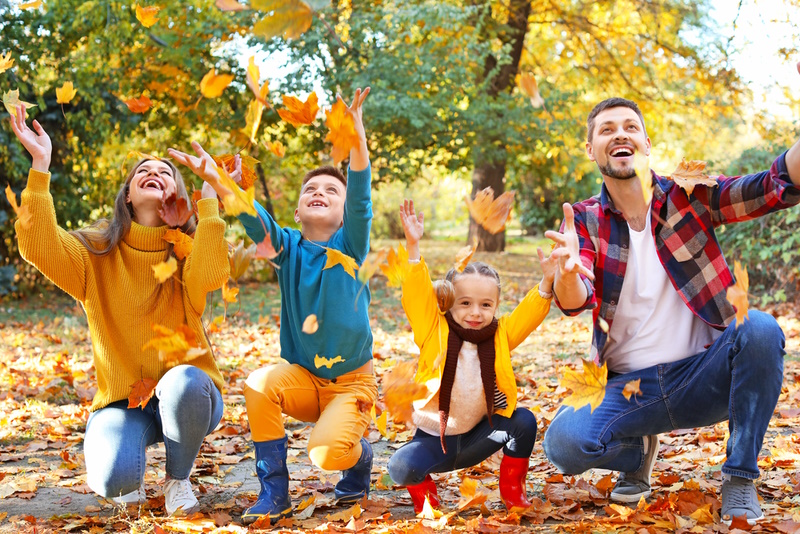
Photo by Depositphotos
If are looking for editing resources like actions, overlays, and textures, I highly recommend paying a visit to my store, it has amazing professional photo editing tools.
In addition, you can check my editing tutorials, and my YouTube channel there are many tips and tutorials there.
Thanks for reading, I hope you enjoyed the article, in case you have any questions just drop them below & I will be happy to answer you.
The featured Image by Pepper Mint from Pixabay
If you enjoy the site, don’t forget to subscribe, we will only inform you when a new article is posted.







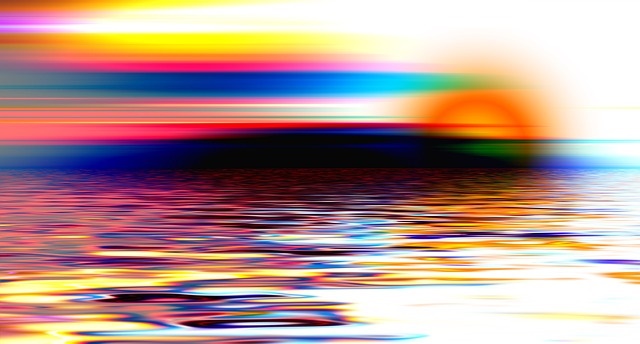
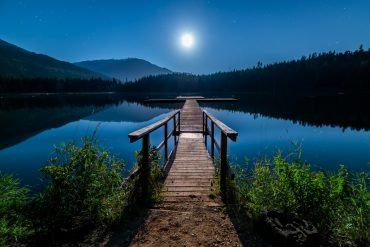
Very helpful article and also very thorough. Here in Canada, we have a window of approximately 2 weeks in the fall when the foliage colors are at their peak. It’s truly a wonderful and perfect time for photography. If you had to pick just one location in the entire world to take pictures during the fall season, where would it be?
Thank you for your positive feedback on the article! I’m glad to hear that you found it helpful and thorough.
Regarding your question about the best location in the world for fall photography, it’s a difficult choice as there are so many beautiful places to capture the colors of autumn. However, if I had to choose just one location, I would recommend the eastern United States, particularly the New England region, for its stunning fall foliage.
Of course, there are many other wonderful locations around the world to capture the beauty of autumn, and the best location will depend on personal preferences and interests. But if you have the opportunity to visit the New England region during the fall season, I highly recommend it for a memorable and rewarding photography experience.
After studying photography, I found that there is a lot of knowledge contained in it.
For example, when shooting a specific season, time and location are very important.
Many details need to be prepared in advance in order to achieve a perfect photo.
I thought photography was just pressing the shutter button, but I never thought it would be so broad and profound.
Your article is very helpful!! Thanks
Thank you for your comment, glad you find the article helpful